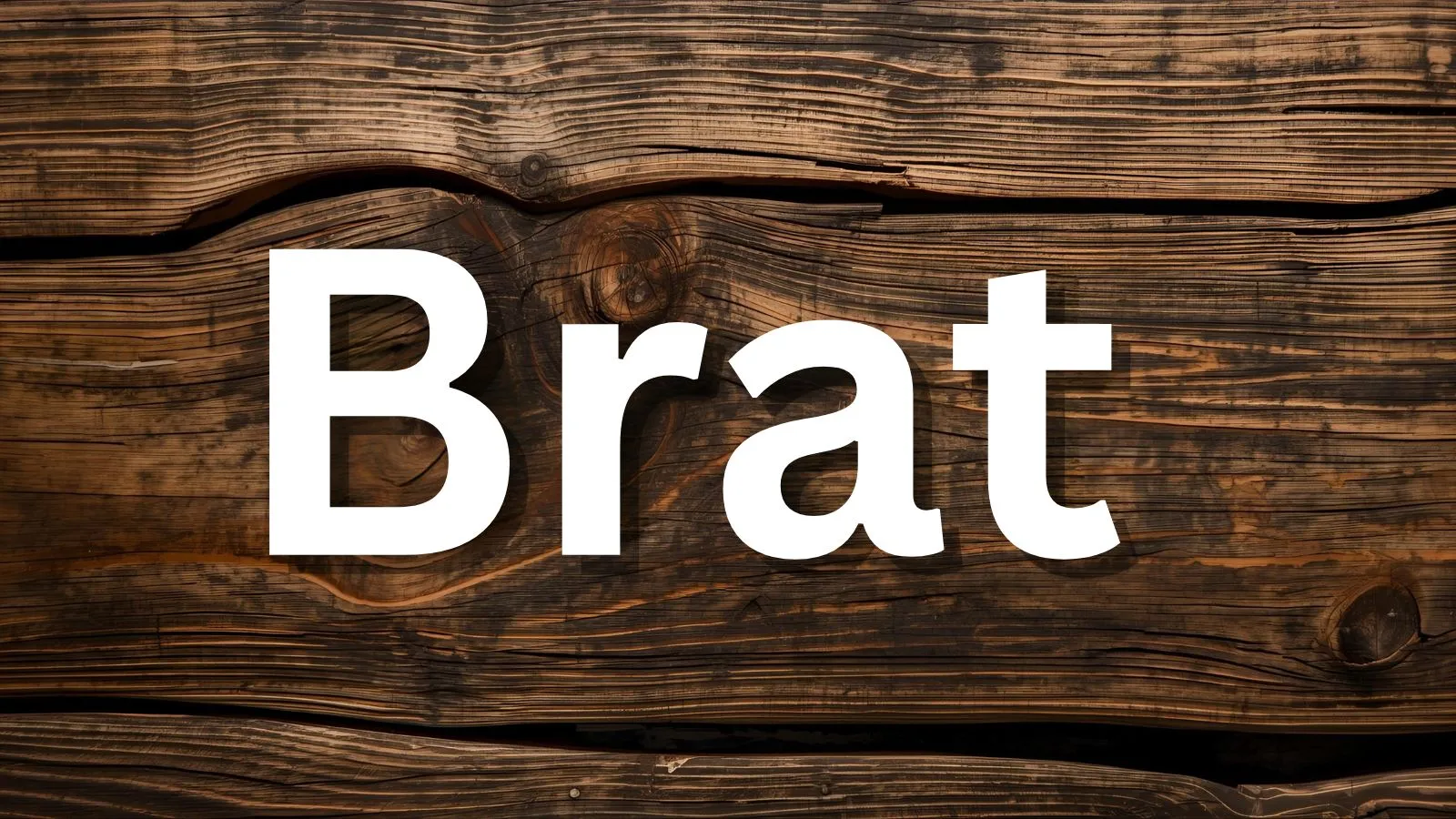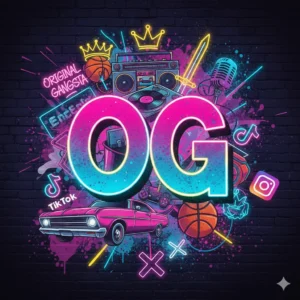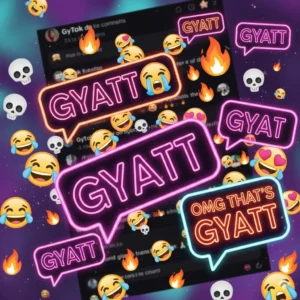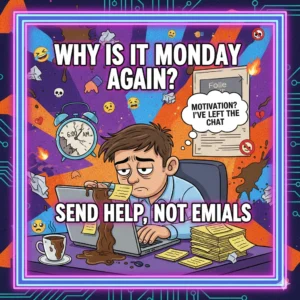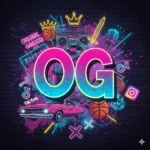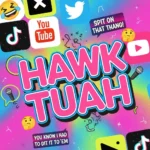Language is never static; it evolves alongside culture, technology, and social interaction.
In 2025, slang continues to dominate digital communication, shaping the way people connect across platforms like TikTok, Instagram, X (formerly Twitter), and even professional spaces like Slack or LinkedIn.
Among the many slang terms circulating online, “brat” has developed into one of the most versatile, layered, and context-dependent words.
While once used almost exclusively as a mild insult toward spoiled or mischievous children, the term has undergone a remarkable transformation.
It now spans fashion, music, internet culture, psychology, and social identity. In fact, in 2025, “brat” has become a cultural marker—expressing everything from playful rebellion to ironic self-branding.
This article provides a deep-dive, 3500+ word exploration into the slang meaning of “brat,” covering:
- Its origins and evolution
- How it is used in 2025 across platforms
- Nuances in tone (playful, insulting, self-deprecating, etc.)
- Professional, casual, and humorous alternatives
- Examples in real-world text conversations
- Why “brat” continues to thrive as a linguistic tool for identity
By the end, you’ll not only understand “brat” but also know when—and how—to use or avoid it depending on context.
What Does “Brat” Mean in Slang?
At its simplest, “brat” means someone who behaves in a spoiled, entitled, mischievous, or playful way. But slang thrives on ambiguity, and by 2025, “brat” has acquired a spectrum of meanings:
- Classic Childish Spoiledness – A person who complains, demands attention, or acts immature.
- Playful Flirtation – Often used romantically or sexually to describe someone who playfully resists or teases.
- Irony & Self-Branding – People, especially on social media, adopt “brat” to signal independence, cheekiness, or rejection of norms.
- Fashion & Music Culture – With the rise of Y2K nostalgia and celebrity influence, “brat” has been embraced as a vibe: bold, unapologetic, colorful, and rebellious.
- Digital Persona – Online users may call themselves or others “brats” to downplay serious criticism, transforming negativity into empowerment.
The Evolution of “Brat”: From Insult to Identity
1. Traditional Origins
The word “brat” dates back centuries, originally meaning a rag or child’s garment before morphing into its child-related connotation. By the 20th century, calling someone a “brat” implied they were spoiled or misbehaved.
2. 2000s–2010s Usage
For decades, “brat” was primarily a parental term: “Stop being such a brat!” In pop culture, it appeared in films and TV shows directed at kids.
3. TikTok Era (2020–2023)
With TikTok’s rise, slang accelerated. Younger users began reclaiming “brat” in fun, ironic contexts. Videos labeled “bratty aesthetic” gained millions of views, showcasing glitter, bold makeup, and mischievous confidence.
4. The 2024–2025 “Brat Renaissance”
By 2024, celebrities amplified the word. For instance, pop star Charli XCX’s album “Brat” gave the term global recognition, branding it as an edgy, stylish, self-aware identity. In 2025, “brat” is no longer just a childish insult—it’s a badge of boldness.
“Brat” in 2025 Digital Culture
1. Social Media Aesthetic
On TikTok, the hashtag #BratEnergy surpassed 1.2 billion views in early 2025. It’s associated with:
- Neon colors and playful rebellion
- Party culture mixed with irony
- Rejecting perfection for authenticity
2. Gaming & Online Communities
In Discord or gaming chats, players often jokingly call teammates “brats” when they demand resources, hog attention, or complain.
3. Romantic & Flirty Conversations
In relationships, “brat” often appears in banter:
- “You’re being such a brat, but it’s cute.”
Here, tone is essential—it’s affectionate, not insulting.
4. Fashion & Lifestyle
Brands in 2025 now capitalize on “brat” as a marketable identity. From “Bratcore” streetwear to playful marketing campaigns, the word is commodified but still retains its edge.
Nuances of Tone: When “Brat” is Positive vs. Negative
The meaning of “brat” depends heavily on tone, context, and relationship.
- Positive Playful Use:
- Between friends: “Stop being a brat, you always get the last slice!”
- Between partners: “You’re my favorite brat.”
- Between friends: “Stop being a brat, you always get the last slice!”
- Neutral/Ironic Use:
- Online self-description: “Living my brat era unapologetically.”
- Online self-description: “Living my brat era unapologetically.”
- Negative Use:
- In criticism: “She’s such a brat—always demanding attention.”
- In criticism: “She’s such a brat—always demanding attention.”
Tone markers (emojis, voice, or familiarity) make the difference between insult and compliment.
Professional, Polite, and Casual Alternatives to “Brat”
Since “brat” may sound harsh or childish in formal settings, you can swap it with tone-appropriate alternatives. Below are ten polished, casual, and humorous alternatives for different contexts.
1. Spoiled
- Professional: “She has a sense of entitlement.”
- Casual: “You’re spoiled, but I love it.”
2. Playful
- A softer, more positive word.
- “Don’t be so playful with my food!”
3. Mischievous
- Neutral, works for kids and adults.
- “That mischievous smile gives you away.”
4. Rebellious
- Stronger, empowering alternative.
- “She’s rebellious in the best way.”
5. Cheeky
- Common in UK English, conveys light humor.
- “He’s cheeky but charming.”
6. Entitled
- More serious, professional term.
- “The client seemed entitled.”
7. High-maintenance
- Popular in lifestyle/relationship contexts.
- “He’s a little high-maintenance, but worth it.”
8. Independent-minded
- Polished, avoids negativity.
- “She’s strong-willed and independent.”
9. Attention-seeking
- Often used online.
- “That post was a little attention-seeking.”
10. Impish
- Playful yet mischievous.
- “His impish grin made everyone laugh.”
Examples of “Brat” in 2025 Text Conversations
Example 1: Flirty
A: “You didn’t reply for 2 hours 😒.”
B: “Such a brat, I was in a meeting 😅.”
Example 2: Friends
A: “I’m not sharing my fries.”
B: “Wow, total brat move.”
Example 3: Family
Parent: “You already got a toy yesterday.”
Child: “But I want this one too!”
Parent: “Don’t be a brat.”
Example 4: Social Media Caption
- “Entering my brat era 💅✨ #BratEnergy”
Example 5: Work Chat (Careful Use)
Colleague A: “Can you take this task too?”
Colleague B: “I’d say yes, but I’ll sound like a brat if I complain 😂.”
Example 6: Relationship Banter
Partner A: “Why didn’t you save me dessert?”
Partner B: “Because you’re a brat who steals mine every time.”
Example 7: Gaming Chat
Player A: “I want that rare item.”
Player B: “Don’t be a brat, we all need it.”
Example 8: Irony
Tweet: “Skipping responsibilities to nap = peak brat energy.”
Example 9: Celebrity Interview 2025
“I think my new line is about embracing your inner brat—confidence, color, and chaos.”
Example 10: Group Text
Friend A: “We’re leaving at 7.”
Friend B: “Make it 7:30, I’m slow.”
Friend A: “You’re such a brat 😤.”
Why “Brat” Will Stay Relevant Beyond 2025
Unlike slang that fades quickly, “brat” is deeply rooted in human behavior and emotion. Its survival lies in:
- Universality – Everyone has encountered brat-like behavior.
- Adaptability – Works as insult, compliment, aesthetic, or brand identity.
- Cultural Endorsement – Music, fashion, and influencers keep it alive.
- Digital Relatability – Perfect for memes, captions, and playful banter.
In short, “brat” is not just slang—it’s a linguistic mirror of rebellion, play, and identity in the 21st century.
Conclusion
By 2025, the slang meaning of “brat” has expanded from a narrow insult into a multi-layered cultural identity.
It represents playfulness, rebellion, flirtation, and irony—depending on tone and context.
Knowing when to use “brat” (and when to replace it with alternatives like “cheeky,” “playful,” or “rebellious”) makes communication sharper, funnier, and more socially aware.
As slang evolves, “brat” remains a standout term—simultaneously nostalgic and modern, personal and universal.
Whether you’re texting a partner, captioning a selfie, or decoding TikTok trends, understanding this word is essential to staying fluent in digital culture.
